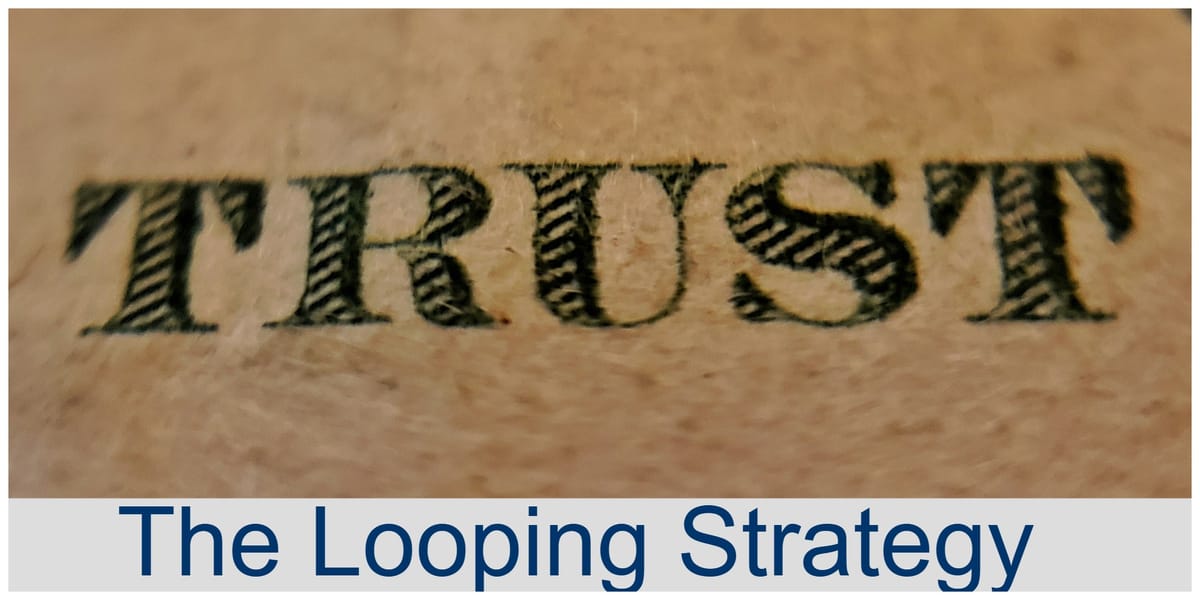Master Objections With The Looping Technique

Imagine you’re mid-pitch, and a prospect hits you with, “I need more time to think”.
Panic sets in. Do you push harder, backtrack, or concede?
For many, objections derail momentum. But in Straight Line Selling, objections aren’t roadblocks—they’re opportunities.
Enter looping, a strategic dance that keeps you in control, builds trust, and guides prospects back to the close.
Here’s how to master it.
What is Looping?
Looping is a nuanced technique where objections are met not with resistance, but with empathy and strategic reinforcement.
Instead of clashing with concerns, you acknowledge them, revisit your core message, and amplify the urgency to act.
It’s about maintaining rapport while steering the conversation back to the “Straight Line”—the path to closing.
The 5-Step Looping Process
1. Acknowledge the Objection: “I Hear You”
Start by validating their concern. This builds trust and disarms defensiveness.
Example:
- Prospect: “This seems too expensive.”
- You: “I totally get it—budget’s always a priority.”
Why it works: Empathy opens doors. It signals you’re listening, not just selling.
2. Deflect: “You’re Not Alone”
Temporarily set aside the objection by normalizing it. This prevents a tug-of-war.
Example:
- “Many of my clients felt the same way before they saw the results.”
Pro Tip: Use phrases like, “That’s a common concern…” to universalize their worry.
3. Re-Present the Three Tens: Reinforce Certainty
Loop back to Belfort’s Three Tens—product, salesperson, company—to rebuild confidence.
- Product: Highlight benefits. “This tool cut costs by 30% for similar teams.”
- Salesperson: Share success stories. “I’ve helped 50+ businesses streamline budgets.”
- Company: Leverage credibility. “We’ve been trusted by [Big Brand] for 5 years.”
Key Move: Tailor your re-presentation to the objection. If they doubt ROI, focus on proven results.
4. Amplify Pain & Lower Risk: “What’s at Stake?”
Reignite their discomfort with inaction while reducing perceived risk.
- Amplify Pain: “Every month delayed costs you $10K in inefficiencies.”
- Lower Risk: “Our 60-day guarantee ensures you love it or we refund you.”
Why it works: Pain motivates action; guarantees ease fear.
5. Ask Again: “Let’s Move Forward”
Close with confidence. Your tone should radiate certainty.
Example:
- “Given the savings and security, can we get you started today?”
Pro Tip: Use assumptive language: “When would you like onboarding?” vs. “Are you ready?”
Staying on the Straight Line: Control the Conversation
Looping isn’t a detour—it’s a strategic pivot. To stay on track:
- Avoid Tangents: Gently steer back. “Let’s revisit how this solves [pain point].”
- Stay Concise: Over-explaining breeds doubt. Keep responses sharp and focused.
- Lead with Certainty: Your confidence is contagious. If you hesitate, they will too.
Why Looping Works: The Psychology
- Builds Rapport: Acknowledging concerns fosters trust.
- Incremental Certainty: Each loop strengthens their confidence in you and the solution.
- Emotional + Logical Appeal: Addresses both the heart (pain relief) and mind (risk reduction).
Real-World Example: From Objection to Close
Scenario: A prospect hesitates on a CRM purchase.
- Objection: “We’re happy with our current system.”
- Looping Response:
- Acknowledge: “I understand—switching tools can feel daunting.”
- Deflect: “Many clients stuck with outdated systems until they saw the ROI.”
- Re-Present: “Our CRM automates 80% of manual tasks, freeing your team for strategic work.”
- Amplify Pain: “How much time is your team losing on data entry each week?”
- Ask Again: “Shall we schedule a demo to show you the time savings firsthand?”
Actionable Tips to Master Looping
- Anticipate Objections: List common concerns and pre-script loops.
- Role-Play: Practice with a colleague to refine tone and timing.
- Debrief Post-Call: Analyze which loops worked and why.
Turn Objections into Opportunities
Looping transforms objections from dead-ends into stepping stones.
By mastering this dance, you’ll not only close more deals but build deeper trust with prospects.
Remember: Sales isn’t about avoiding “no”—it’s about guiding “maybe” to “yes.”
In your next pitch, view objections as invitations to loop. Acknowledge, pivot, and close with confidence.
Keep Crushing!
- Sales Guy
